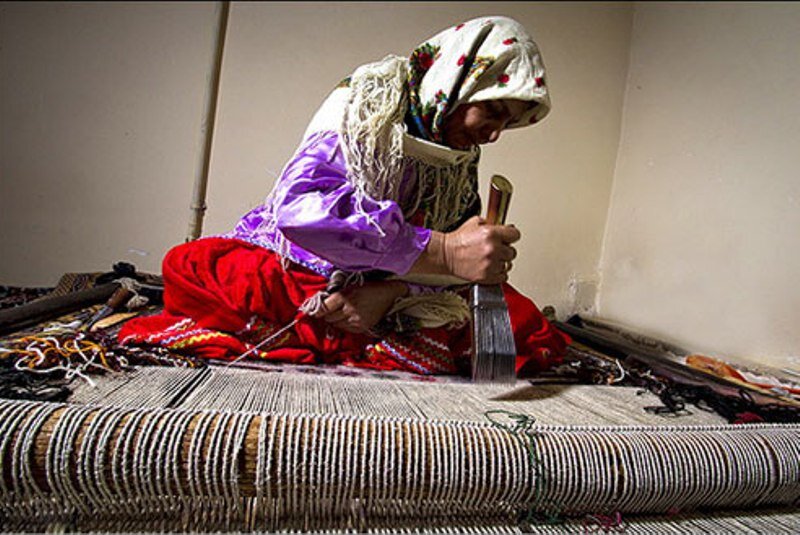Sirjan kilims renowned for superior quality and vivid colors

TEHRAN – Kilims have long been used as floor coverings mostly being made by rustic or nomadic folks of the Iranian plateau.
It is believed that Sirjan is a cradle for Kilim carpets. In fact, superior quality, innovative patterns and vivid colors have resulted in its registration as a global hub for kilims by the World Council of Handicrafts.
Kilim is a pileless floor covering handwoven in most places where pile rugs are made. The term is applied both generally and specifically, with the former use referring to virtually any rug-like fabric that does not have a pile.
According to Visit Iran, Shiriki-Pich or Suzani Kilims of Sirjan is of high importance considered as an intermediate between carpets and Kilims. It is believed that they were invented when the Afshar and Bughachi clans entered Kerman and later during the Afsharid dynasty. However, there are many theories about the naming of these Kilims.
One is that Shiriki Pich is a cover for horses which refers to its first usage. On the other hand, “Pich-Bafi” is a kind of Kilim, and “Shiriki” can refer to the type of the Shiriki knot that is double knots, or it can indicate that the product was weaved by two persons.
Like many other Kilims, they are woven with wool yarns. The loom is similar to the looms of carpets, and the technique is similar to the technique of carpet weaving. There are two primary knots for Sirjan Kilims, one is “Matn” and the other is “Abduzi”.
In these weaves, unlike other Kilims, the weft plays no role in making the patterns but it is the wraps that create them. This Kilim is rarely woven based on a premade pattern.
Sources say almost all Sirjan Kilims are unique and no two similar pieces can be found. The backgrounds are mostly cream, milky white, red, blue, and dark blue. It is possible to describe these incredible hand weaves by the word “Hessi Baf” or sensational weave, because the mood and emotions of the weavers, who are nomad women, affect even their choice of color during the production.
The motifs come in various colors. Kinds of green, yellow, pink, and blue are used to make geometric and semi-cursive motifs and motifs of fish, giraffe, and birds like the stork, sparrow, peacock, etc.
It is rare to find a Sirjan Kilim plain and without any motif. Herbal and animal pigments such as Cochineal and Vermilion worm are mixed with oxides of metals to dye the yarns. “Gol-o-Godani”, “She Kaleh”, “Kuh Panj”, “Bandi Lozi”, “Kheshti” or “Ghalebi” and paisley are some of the most common motifs of Shiriki-Pich Kilims. Today, in addition to making bags, chair covers, and wall hanging, they are considered an important non-oil export of Iran due to their international popularity.
The kilims are often woven on narrow looms, and two mirror-image pieces are sewn together along the long edge to produce the completed kilim. The vertical color junctions involve a discontinuity of the wefts, the colored yarns that produce the design. At these boundaries, there are small slits in the fabric. Extremely fine kilims of silk were woven for the Safavid court (1502–1735), possibly in Kashan.
Persian carpets are sought after internationally for their delicate designs and their good quality. Among Persian carpets, particularly those of the classic period, the medallion may represent an open lotus blossom with 16 petals as seen from above, a complex star form, or a quatrefoil with pointed lobes.
A medallion carpet is any floor covering on which the decoration is dominated by a single symmetrical centerpiece, such as a star-shaped, circular, quatrefoil, or octagonal figure. The name, however, is sometimes also given to a carpet on which the decoration consists of several forms of this kind or even of rows of medallion figures.
Handmade Persian carpets are sought after internationally for their delicate designs and their good quality. They are almost expensive but they are worth every penny!
AFM
Leave a Comment